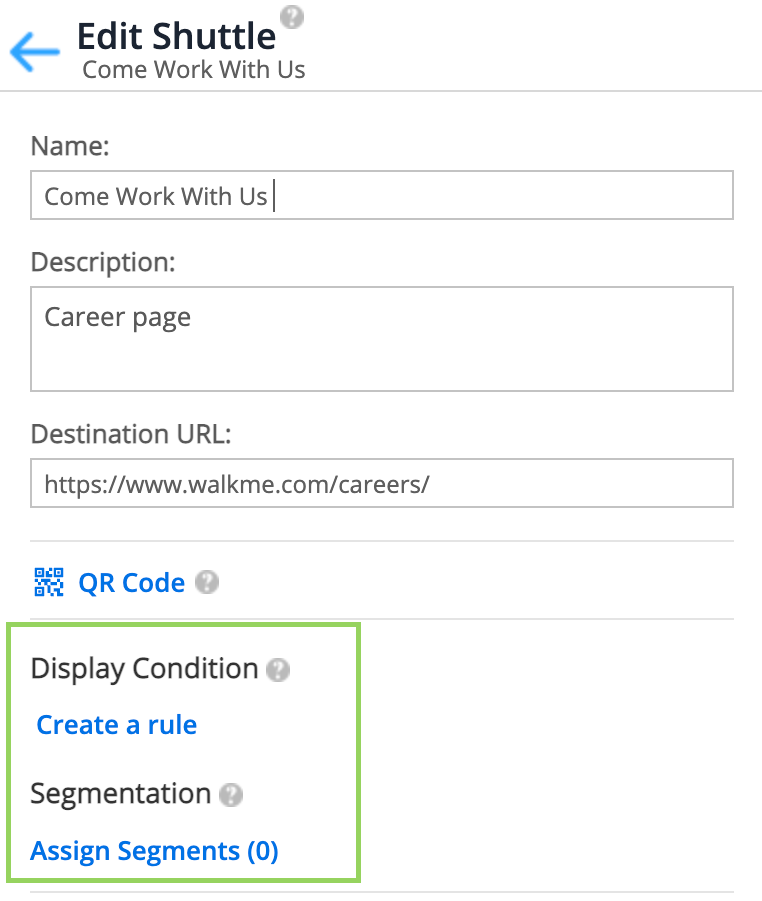Welcome to the
WalkMe Help Center
Please log in to continue

Please log in to continue

Content for the mobile menu app supports IDP-based segmentation. Builders for the mobile menu can segment content via the Rule Engine in the Editor.
Segmentation allows you to decide when to display your WalkMe content to users using different "use cases" or to remove items from a user's view according to the segmentation. Segmentation is an important part of your builds. If WalkMe items aren't relevant to certain users or under certain conditions, they can be hidden using segmentation. This will allow your users to focus on the available tasks and reduce clutter on the screen.
Only the QuickActions and Onboarding Tasks can be segmented on the mobile menu app.
In order to segment content for the mobile menu app, the account must have an IDP integration on the associated desktop and mobile menu system. After this is set-up, the IDP attributes will appear in the rule engine in the WalkMe Editor. Learn more about IDP integration here.
Content can be segmented in the Editor via segmentation or via display conditions.

Note this table for which rules are available for the mobile menu segmentation:
|
Rule name |
Desktop menu |
Mobile menu |
|
User Data |
Supported |
Not Supported |
|
User Attributes |
Supported |
Supported |
|
Date |
Supported |
Supported |
|
Time |
Supported |
Supported |
|
Platform |
Supported |
Supported |
|
Active Directory |
Supported |
Not Supported |
|
Apps Running |
Supported |
Not Supported |
|
Apps Not Running |
Supported |
Not Supported |
Segmentation:
Segmentation involves the use of one or more rules. When multiple rules are assigned to a segment, they are combined using an "OR" operation. This means that if any of the conditions are met (return true), the content will be segmented accordingly.
Learn more about about creating segments
Display Condition:
Segmentation based on display conditions carries more weight than WalkMe segmentation. This is because the content will only be displayed if the corresponding rule (if present) is satisfied. If the display condition evaluates to false, the content will not be shown, regardless of the segmentation outcome.
The relationship between the "segmentation" and the "display condition" is determined by the logical operator "AND."
To learn more, refer to the Display Condition Segmentation section of the this article